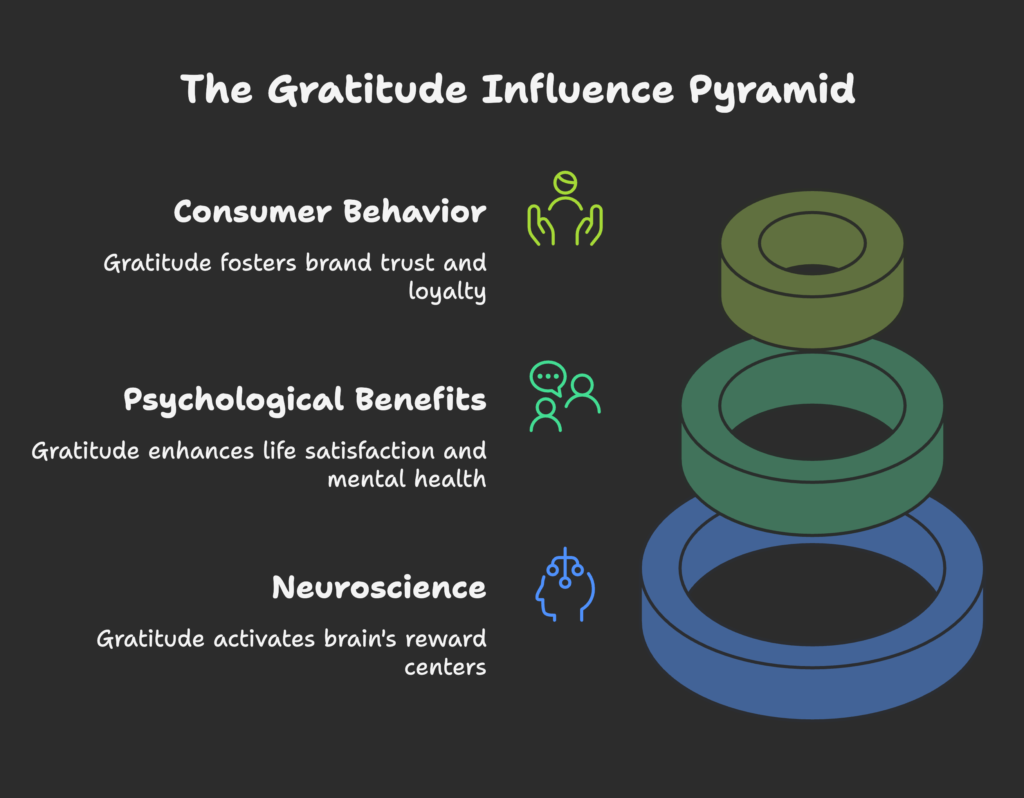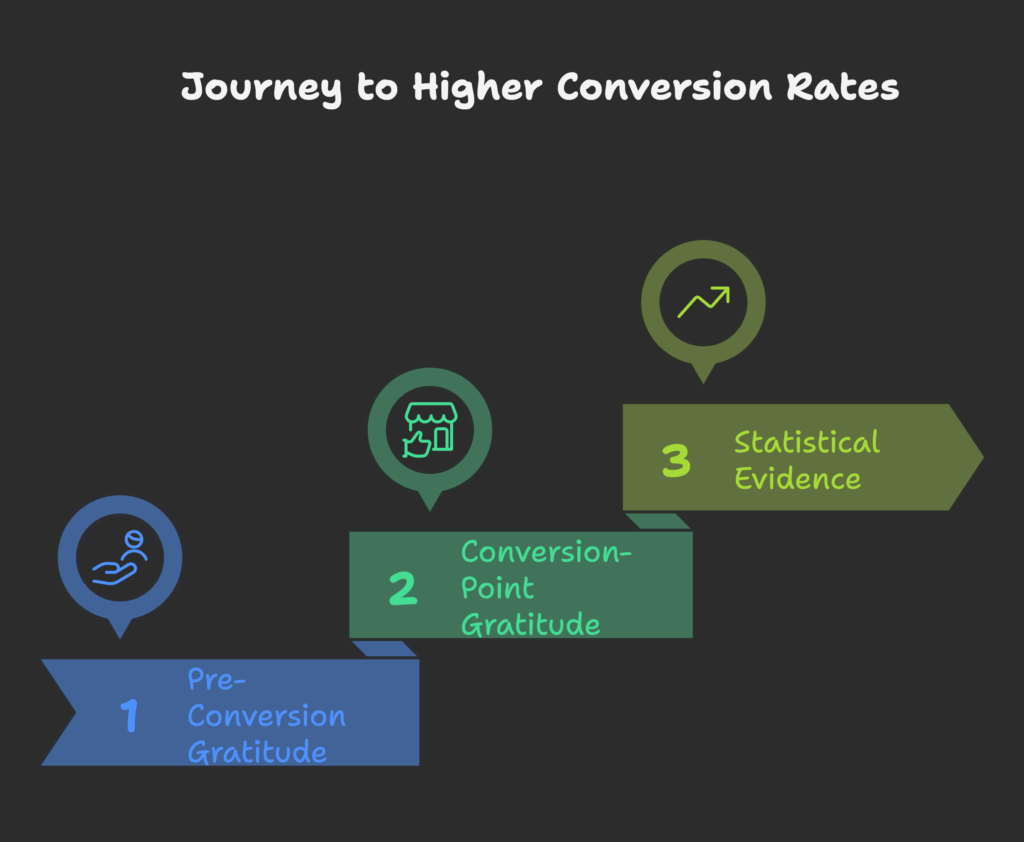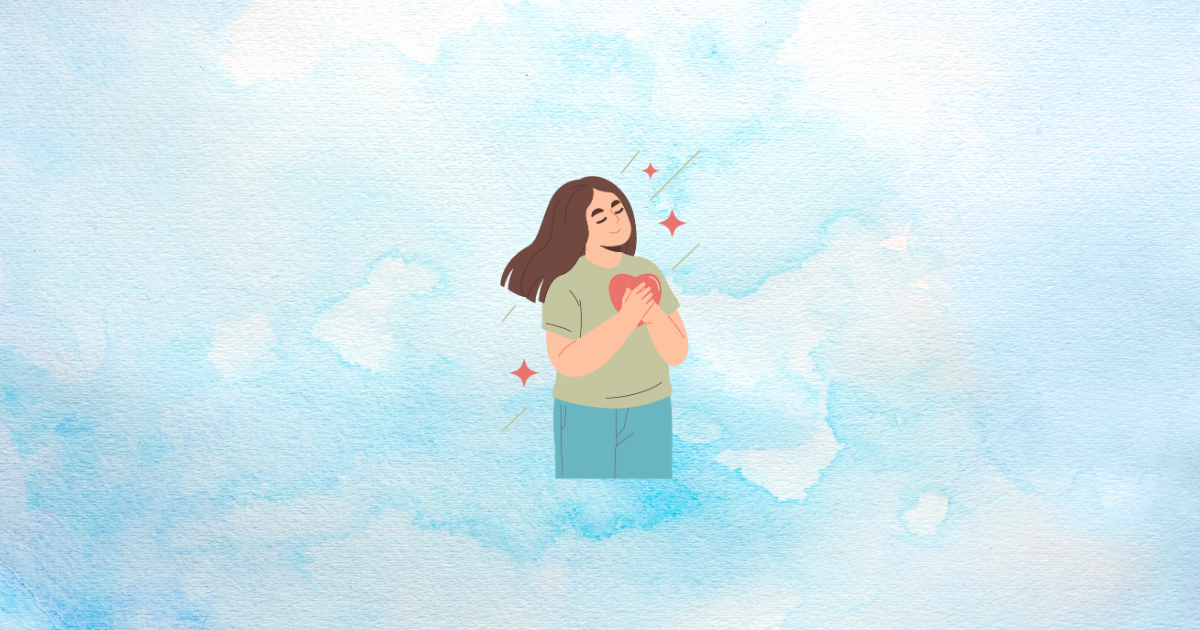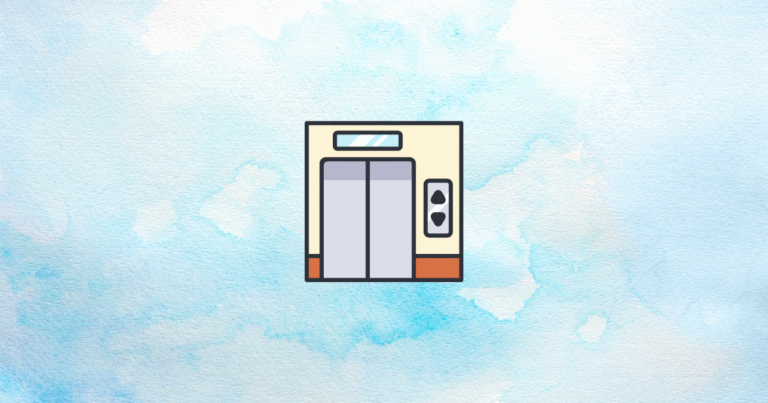Did you know that simply saying “thank you” can double or even triple the number of loyal customers you have? Have you ever wondered why some companies have fanatically devoted customers who return over and over? By reading this article, you’ll learn how gratitude – a seemingly small gesture – can be one of the biggest drivers of conversion and customer retention. Ready to explore why a simple “thank you” can transform your business? Let’s dive in!
In this section: We’ll define gratitude in the context of customer relationships, understand the financial and strategic benefits, and see how it’s being used (or underused) in current business practices.
Defining Gratitude in Customer Relationships
At its core, *gratitude* means recognizing and appreciating the value someone brings into our lives. In business, this can be as simple as genuinely thanking a customer for their purchase or offering them a special perk for being loyal. Over time, businesses have shifted away from just transactions toward deeper relationships, so gratitude now plays a more vital role in the customer journey. Remember: 68% of customers leave a business because they feel unappreciated, which highlights the power of a heartfelt “thank you.”
The Business Case for Gratitude
It can cost 5 times more to acquire a new customer than to keep an existing one, so focusing on retention through gratitude is highly cost-effective. Gratitude also offers a competitive edge; when customers feel valued, they’re more likely to stay, buy more, and refer friends. Several studies show positive returns on gratitude-based campaigns, boosting revenues and building strong emotional connections that competitors struggle to break.
Current State of Gratitude Implementation
Many brands talk about the importance of saying thank you, but not all do it effectively. Some see it as an afterthought rather than a strategic tool. Meanwhile, research shows a growing trend: customers *expect* appreciation, yet companies often fail to meet these expectations. As gratitude becomes more recognized as a key retention lever, forward-thinking businesses are seizing the opportunity to stand out with more personal and creative ways to say thanks.
We’ve seen why gratitude matters at a high level. Next, let’s dig into the fascinating science behind it—what happens in our brains and how it influences decisions!
The Psychological Foundations of Gratitude
In this section: We’ll examine what neuroscience tells us about gratitude, explore its benefits for our mental well-being, and see how it shapes consumer behavior.

The Neuroscience of Gratitude
When we feel grateful or express gratitude, our brain’s reward centers light up. *Dopamine*, *serotonin*, and *oxytocin* (often called the “love hormone”) are released, elevating our mood and deepening social bonds. Over time, studies suggest that consistent gratitude practice can literally change neural pathways, making us more positive and receptive to forming trust-based relationships—music to the ears of any customer-centric business!
Psychological Benefits of Gratitude
- Higher Satisfaction: People who practice gratitude report up to 6.86% more satisfaction with life.
- Better Mental Health: Anxiety levels can drop by around 7.76%, and overall mood improves by 5.8%.
- Emotional Regulation: Gratitude fosters resilience, helping people handle stress more effectively.
- Pro-Social Behavior: Feeling appreciated often leads to reciprocation—meaning if you thank your customers, they’ll want to return the favor by staying loyal or making more purchases.
Gratitude in the Consumer Decision Process
Gratitude can significantly influence how we decide what to buy and whom to buy from. When customers feel grateful—or experience gratitude from a brand—they’re more likely to trust that brand, revisit the site, and share positive word-of-mouth. This dynamic stems from *reciprocity*: when someone appreciates us, we want to do something nice in return, such as making a purchase or recommending a product.
We’ve uncovered the science and psychology of gratitude. Now, let’s see how you can apply this knowledge to boost conversions, starting before the sale even happens!
Gratitude as a Conversion Tool
In this section: We’ll discover why showing gratitude to prospective customers can help them cross the line from “maybe” to “yes,” and look at data proving the impact on conversion rates.

Pre-Conversion Gratitude Strategies
Even before someone purchases, you can offer valuable content, free resources, or personalized assistance as a way of saying, “We appreciate your interest.” This sets a positive tone and starts the reciprocity loop. By creating small “thank you” moments in your marketing—like a friendly note in a newsletter or a bonus for signing up—you build a sense of goodwill that nudges prospects toward conversion.
Conversion-Point Gratitude Implementation
At the critical moment of purchase or sign-up, a few words of *thanks* can help soothe any last-minute doubts. For example, a pop-up message that says, “Thank you for choosing us, we appreciate your trust,” can reduce buyer’s remorse. When customers feel recognized at the decision point, they tend to complete the purchase more confidently.
Statistical Evidence of Conversion Impact
- Conversion Rate Differences: Campaigns that explicitly say “thank you” have shown a 10.29% conversion rate compared to just 4.86% in similar campaigns without gratitude messaging.
- A/B Testing Proof: Adding a short gratitude note in a checkout flow improved final purchase rates in multiple case studies.
- Long-Term Effects: The cumulative impact of small thank you touchpoints can lead to significantly higher overall conversions over time.
We’ve learned how gratitude can drive that initial sale. Next, we’ll focus on one of the most underrated conversion tools out there: your thank you pages!
Thank You Pages as Strategic Conversion Points
In this section: Let’s explore why the humble thank you page holds massive opportunity, how to optimize it, and ways to use it for immediate upsells or deeper brand connection.
The Critical Role of Thank You Pages
Many businesses treat the thank you page as the end of the process—some throw in a quick “thanks” and call it a day. However, this moment is actually your opening for deeper engagement. Customers who’ve just converted are in a positive emotional state. This is the perfect time to strengthen their decision and introduce them to further opportunities with your brand.
Key Elements of Effective Thank You Pages
- Clear Confirmation: Let the customer know their purchase or sign-up was successful.
- Value Reinforcement: Remind them why they made a great choice.
- Next Steps: Offer something else to explore, like a related product or community link.
- Personalization: Use their name and, if possible, tailor suggestions based on what they bought.
Conversion Opportunities on Thank You Pages
Right after a customer completes an action, you can introduce *cross-sells*, *upsells*, or even a referral program sign-up. Encouraging them to share their purchase on social media or to join a VIP list also reinforces their positive feeling. Including a brief survey or collecting feedback can provide insights that shape future offers.
Now we know how to keep the momentum post-purchase. Let’s explore how gratitude cements long-term loyalty, not just a single transaction.
Gratitude as a Retention Tool
In this section: We’ll look at how appreciation strengthens loyalty, discuss post-purchase gratitude ideas, and see how it affects key retention metrics.
The Relationship Between Gratitude and Loyalty
Studies repeatedly show that grateful customers are more loyal. Feeling appreciated builds an emotional bond, acting as a deterrent to switching brands. Gratitude also enhances customer lifetime value, as people tend to stay longer and spend more when they sense genuine appreciation.
Post-Purchase Gratitude Strategies
- Immediate Follow-Up: Sending a personalized thank you email or message right after the purchase.
- Milestone Celebrations: Marking anniversaries or spend thresholds with a special gift or note.
- Surprise Gratitude: Occasional unexpected perks—like a random coupon—can delight customers.
- Exclusive Events: Inviting loyal customers to private webinars, Q&A sessions, or product previews.
Retention Metrics Influenced by Gratitude
When gratitude is woven throughout the customer experience, churn rates often drop, and repeat purchases can go up significantly. You’ll also see higher Net Promoter Scores (NPS) as customers become more willing to recommend a brand that values them. Overall satisfaction scores tend to climb in direct proportion to how appreciated customers feel.
We’ve seen the power of gratitude for retention. Next, let’s discover how to integrate gratitude across multiple marketing channels for maximum impact!
Implementation Across Marketing Channels
In this section: We’ll discuss actionable ways to express gratitude through email, social media, your website, and even offline methods.
Email and Messaging Strategies
Emails are a prime channel for saying thank you. A short and sweet “We appreciate you” note can go a long way. Personalization is crucial: mention the product they bought or the date they joined. You can even automate “thank you triggers” for birthdays or anniversaries to create pleasant surprises. Always keep an eye on click-through and open rates to measure effectiveness.
Social Media Gratitude Approaches
- Shout-Outs: Publicly recognizing a customer or follower for their support or content.
- User-Generated Content Celebrations: Sharing a customer photo or story with a genuine note of thanks.
- Responsive Thank Yous: Promptly replying to mentions or questions with a warm appreciation note.
This not only builds community but also shows onlookers that you truly care about every interaction.
Website and Digital Experience Integration
Add gratitude elements to your site: for instance, a personalized banner on the homepage after they log in, or an in-app pop-up that thanks them for regular usage. Make sure your *thank you pages* or confirmation screens reinforce the positive sentiment. Consider a simple “You Rock!” message when they complete a key action. Small touches can have a big cumulative effect.
Traditional and Offline Gratitude Touchpoints
Handwritten thank you notes still hold special power. Imagine opening a package and finding a personal note with your name on it—instant delight! In retail environments, an authentic smile and “thank you for visiting” from staff can create loyal fans. Integrating offline and online efforts—like referencing an in-store visit in an email—can make your appreciation efforts feel unified and genuine.
So you know the channels. Next up: personalization. Because everyone loves a thank you, but they especially love one that speaks to their unique experience.
Personalization of Gratitude Experiences
In this section: We’ll explore how using data improves gratitude’s impact, the best timing to say thanks, and how to maintain authenticity at scale.
Data-Driven Personalization Strategies
Leverage customer data—purchase history, browsing behavior, or even quiz responses—to send tailored “thank you” messages. AI tools can help you figure out what each customer values most. Just remember to keep the tone human and avoid sounding robotic. Authenticity is king when it comes to appreciation.
Timing and Context Optimization
- Mapping the Journey: Identify the key points (post-sign-up, post-purchase, etc.) where gratitude hits hardest.
- Behavioral Triggers: Send a thank you note after a certain number of logins or usage milestones.
- Avoid Overdoing It: Too many thank yous can feel insincere, so space them out thoughtfully.
Voice and Tone Considerations
The words you choose really matter. Aim for a *friendly yet professional* tone that reflects your brand identity. Be mindful of cultural differences—some cultures prefer a more formal approach to gratitude, while others respond better to lighthearted, casual language. Testing different language variations can help you fine-tune your approach.
We’ve delved into the “how” of personalization. Now, let’s see real-world examples and the outcomes of gratitude in action!
Case Studies and Success Stories
In this section: We’ll review how e-commerce, subscription, and service-based businesses have successfully implemented gratitude, boosting both conversion and retention.
E-commerce Gratitude Strategies
Many e-commerce stores have improved conversion rates simply by optimizing their thank you pages and post-purchase emails. Some highlight user-generated content—thanking customers for sharing photos—and have seen a surge in loyalty. Others offer a personalized discount for a future purchase with a grateful message, leading to increased repeat orders. In these cases, e-commerce brands often report rises in overall customer satisfaction scores.
Subscription Business Models
Take, for example, Pret A Manger’s coffee subscription. By sending periodic thank you notifications and random free upgrades, they keep subscribers excited. Subscription services rely heavily on retention, so small gestures of gratitude can drastically reduce churn. In many subscription programs, systematic appreciation—like monthly “thank you for being with us!” messages—helps maintain a friendly atmosphere that keeps people subscribed longer.
Service-Based Business Applications
Professional service providers—accountants, consultants, software developers—also gain by regularly showing appreciation. For instance, a consulting firm might send a thank you note with each project milestone, celebrating progress together. This fosters a closer relationship and higher client satisfaction. Over time, such gestures boost renewal rates and referrals, essential for service-based growth.
We’ve seen tangible results. Next, let’s look at how to measure these gratitude efforts effectively and keep refining them over time.
Measurement and Optimization
In this section: We’ll pinpoint the key metrics for gratitude programs, discuss testing methods, and explore continuous improvement loops.
Key Performance Indicators for Gratitude Initiatives
- Retention Rate: Compare before and after launching gratitude-focused campaigns.
- Conversion Rate: Track how well thank you pages or messages improve sign-ups or purchases.
- Customer Lifetime Value (CLV): Watch if your “thankful” customers spend more over time.
- Engagement Metrics: Look at email open rates, click-throughs, and social media responses.
Testing Methodologies
A/B testing is a straightforward way to see if gratitude messaging truly works. You can try different “thank you” copy or timing variants. Some companies do longitudinal studies—following customers for months to see if consistent gratitude changes long-term behavior. Qualitative feedback, such as surveys asking if customers feel appreciated, can fill in the details behind the numbers.
Continuous Improvement Frameworks
Feedback loops, both internal (team reviews) and external (customer feedback), help refine your gratitude approach. Keep an eye on competitors’ moves, too—if they’re raising the bar with more heartfelt gestures, you might need to level up. Gratitude strategies can evolve with market trends, technology advancements, and shifting consumer preferences.
Having covered metrics and optimization, let’s talk about potential pitfalls—like appearing insincere or overwhelming customers with too many “thank yous.” Ready to see how to avoid these mistakes? Let’s proceed!
Challenges and Considerations
In this section: We’ll explore common obstacles, such as keeping gratitude genuine at scale, allocating resources, and integrating appreciation across departments.
Authenticity and Avoiding Gratitude Fatigue
Too many messages—or ones that sound automated—can backfire. Authenticity is crucial. Make sure your staff and messaging reflect genuine warmth. It’s also vital to adapt your gratitude style to different audiences and cultures. Overuse of “thank you” might cheapen the sentiment, so balance is key.
Resource Allocation and Prioritization
- Budgeting: Setting aside funds for personalized notes, small gifts, or special events.
- Team Training: Teaching employees how to communicate appreciation effectively.
- Tech Infrastructure: Using CRM or marketing automation that can handle thoughtful, well-timed thank you messages.
You’ll need to track ROI to justify these initiatives, but the return can be substantial in the form of higher loyalty and repeat business.
Integration with Broader Business Strategy
Gratitude shouldn’t be an isolated tactic. It needs to align with your overall brand values—otherwise, it feels out of place. Cross-departmental cooperation (marketing, customer service, product teams) ensures that from the first interaction to long-term follow-up, appreciation remains consistent. Executive support and a company-wide culture of gratitude will keep the momentum going.
Now we’ll look toward the future—how technology, evolving consumer expectations, and innovative gratitude models might shape tomorrow’s appreciation strategies.
Future Trends in Gratitude Marketing
In this section: We’ll discuss emerging technologies in gratitude, shifting customer expectations, and creative new approaches to meaningful thank yous.
Technological Advancements
- AI and Machine Learning: Offering hyper-personalized appreciation moments.
- Voice Interfaces: “Voice-based thank you” on smart devices to maintain direct relationships.
- AR/VR Experiences: Virtual appreciation meetups or interactive “thank you” events.
Evolving Consumer Expectations
As younger, more tech-savvy generations gain buying power, the demand for authentic, real-time responses grows. Social impact also matters—customers appreciate gratitude gestures tied to charitable actions or eco-friendly practices. Brands that adapt to these evolving needs will thrive, while those that ignore them may fade.
Innovative Gratitude Approaches
Future strategies might involve entire communities celebrating mutual success or co-created experiences that revolve around shared appreciation. There could be brand-to-brand gratitude collaborations (like cross-promotions) or cause-based appreciation events where every purchase triggers a donation, further reinforcing good feelings.
With a glimpse into the future, let’s wrap up with final action steps to integrate gratitude into your business strategy and achieve a standout competitive advantage.
Conclusion and Strategic Recommendations
In this section: We’ll summarize the key principles, offer an actionable roadmap, and emphasize why mastering gratitude can set your business apart for the long haul.
Core Principles for Effective Gratitude Implementation
- Authenticity: Sincerity above all. Don’t let automation strip away genuine warmth.
- Consistency: Gratitude should appear at all major customer touchpoints.
- Personalization: Tailor your thanks to reflect each customer’s unique journey.
- Measurement: Track and analyze the impact of gratitude efforts to optimize results.
Implementation Roadmap
Start by auditing where you do (or don’t) say thank you in your customer journey. Rank the quick wins—like optimizing your thank you page—then expand to more complex initiatives, such as a full-fledged appreciation email campaign. Allocate resources for staff training, marketing automation, and a measurement system that tracks improvements in retention and brand perception.
The Competitive Advantage of Gratitude Mastery
Companies that excel at customer appreciation build deeper loyalty, attract more referrals, and earn a better reputation. Gratitude fosters an emotional bond that pure discounts or fancy ads can’t replicate. This emotional connection leads to long-term brand equity and consistent growth, giving you a real edge over competitors who focus solely on short-term tactics.
Small Note: If you’re a Shopify store owner aiming to increase sales without losing the personal touch, consider the Growth Suite application. It integrates seamlessly with your store, helps you manage thank you campaigns, and nurtures a culture of gratitude among your customers—so you can watch your retention rates skyrocket!
References
- Chargebee. (2024). Proven Customer Retention Strategies [Case Studies & Examples]. Link
- PMC. (2023, July 31). The effects of gratitude interventions: a systematic review and meta-analysis. Link
- Endearhq. (2022, December 22). Personalized Messaging: The Power of Thank You. Link
- Fluentcrm. (2025, January 21). 11 Real-Life Thank You Page Examples [+ Why They Work]. Link
- Onesignal. (2024, November 15). How Thankful Mobile Messaging Nurtures Loyalty & Retention. Link
- Positivepsychology.com. (2024, September 19). The Neuroscience of Gratitude and Effects on the Brain. Link
- Semanticscholar.org. (2015, October 2). Testing mediating effect of customer gratitude on Islamic relationship marketing practice. Link
- Thriveagency.com. (2024, May 21). Post-Conversion Strategies: What to Include on Your Thank You Page. Link
- Convert-more.com. (2023, March 20). Thank You Pages Can Increase Retention. Link
- Copyhackers. (2022, March 21). Thank you pages: 7 ways I’ve increased retention and conversion. Link
- Unbounce.com. (2024, April 12). 5 thank you pages examples that take post-conversion to the next level. Link
- Debutify.com. (2025, March 7). How to Make Your Post-Purchase Message Shine. Link
- Rswebsols.com. (2018, October 3). 5 Ways to Fire Up Retention and Boost Conversions with Thank You Pages. Link




